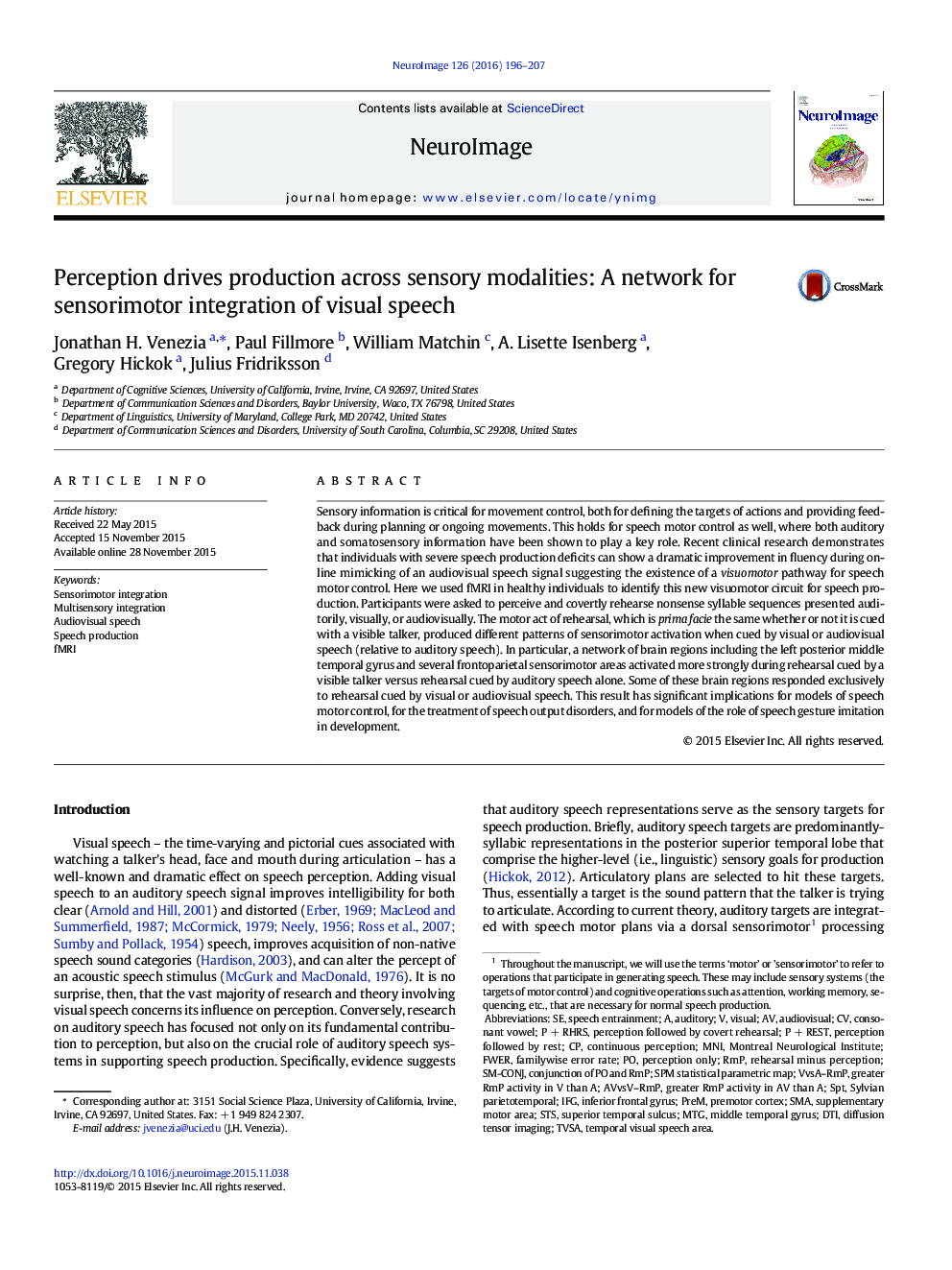| Article ID | Journal | Published Year | Pages | File Type |
|---|---|---|---|---|
| 6023911 | NeuroImage | 2016 | 12 Pages |
Abstract
Sensory information is critical for movement control, both for defining the targets of actions and providing feedback during planning or ongoing movements. This holds for speech motor control as well, where both auditory and somatosensory information have been shown to play a key role. Recent clinical research demonstrates that individuals with severe speech production deficits can show a dramatic improvement in fluency during online mimicking of an audiovisual speech signal suggesting the existence of a visuomotor pathway for speech motor control. Here we used fMRI in healthy individuals to identify this new visuomotor circuit for speech production. Participants were asked to perceive and covertly rehearse nonsense syllable sequences presented auditorily, visually, or audiovisually. The motor act of rehearsal, which is prima facie the same whether or not it is cued with a visible talker, produced different patterns of sensorimotor activation when cued by visual or audiovisual speech (relative to auditory speech). In particular, a network of brain regions including the left posterior middle temporal gyrus and several frontoparietal sensorimotor areas activated more strongly during rehearsal cued by a visible talker versus rehearsal cued by auditory speech alone. Some of these brain regions responded exclusively to rehearsal cued by visual or audiovisual speech. This result has significant implications for models of speech motor control, for the treatment of speech output disorders, and for models of the role of speech gesture imitation in development.
Related Topics
Life Sciences
Neuroscience
Cognitive Neuroscience
Authors
Jonathan H. Venezia, Paul Fillmore, William Matchin, A. Lisette Isenberg, Gregory Hickok, Julius Fridriksson,
